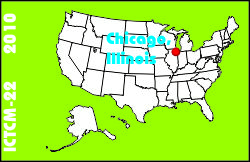
Electronic Proceedings of the Twenty-second Annual International Conference on Technology in Collegiate MathematicsChicago, Illinois, March 11-14, 2010Paper S096
Simulating Rare Baseball Events Using Monte Carlo methods in Excel and R |
J. Scott BillieDepartment of Mathematical Sciences U. S. Military Academy West Point, NY 10996 USA john.billie@usma.edu | Michael HuberDepartment of Mathematics and Computer Sciences Muhlenberg College Allentown, PA 18104 USA huber@muhlenberg.edu | Scott NestlerDepartment of Mathematical Sciences U. S. Military Academy West Point, NY 10996 USA scott.nestler@usma.edu | Gabriel CostaDepartment of Mathematical Sciences U. S. Military Academy West Point, NY 10996 USA |
| Click to access this paper: |
ABSTRACT
Statistics and baseball have had a venerable, long-standing relationship throughout the history of the sport. Practically anything and everything has been tracked by avid baseball fans, and whether or not records will be broken are debated constantly. Websites now offer data sets of hitting, pitching, fielding, and base running events for individuals and teams. Simulating certain events, such as hitting streaks or number of wins in a season, have become effective approaches to answering 'Will this record ever be broken?' One such seemingly unbreakable record is Joe's DiMaggio's famous 56-game hitting streak of 1941. We discuss a Monte Carlo simulation using Excel and the statistical package R to simulate such a streak using actual data from DiMaggio's own streak.Keyword(s): software, statistics
